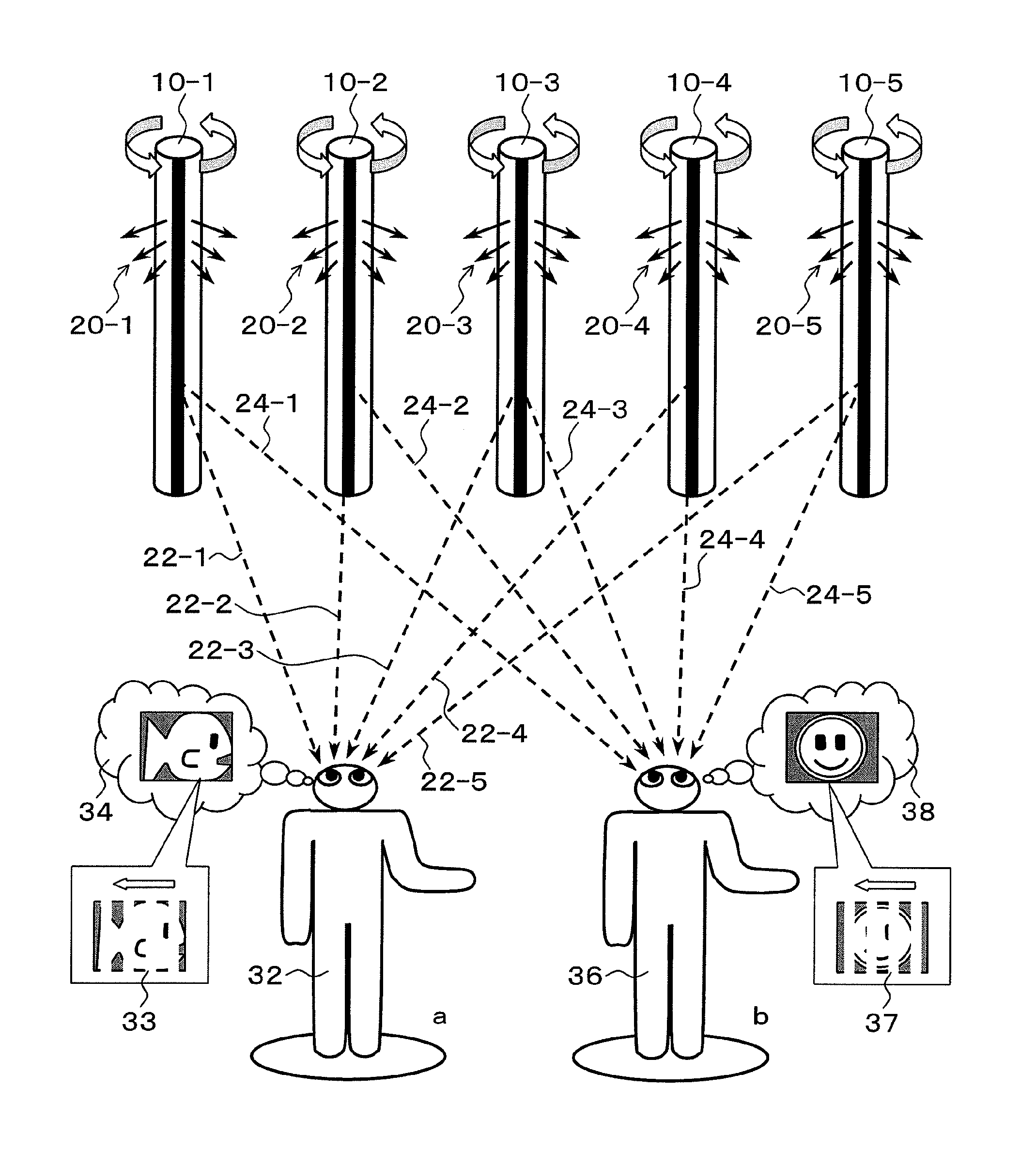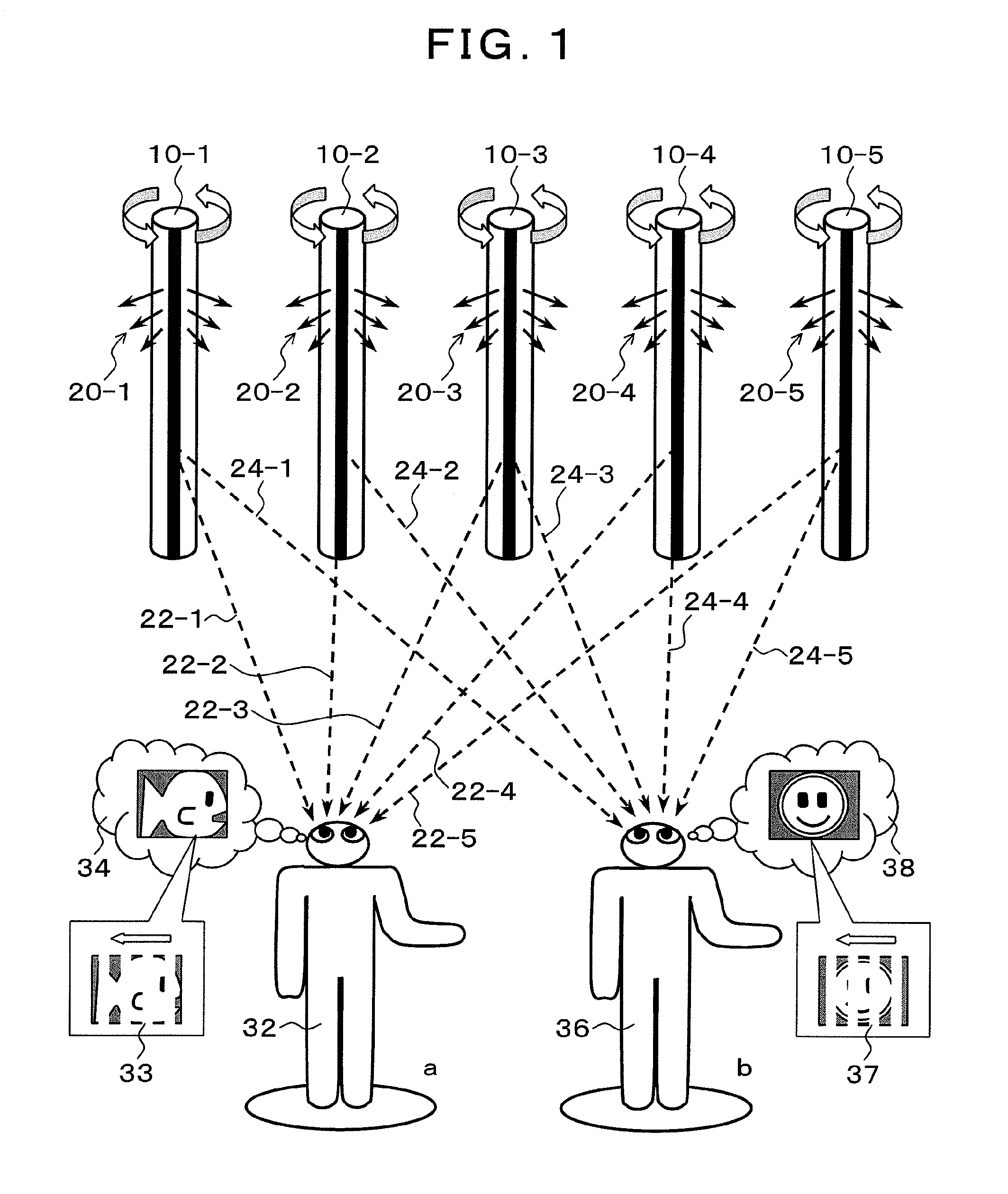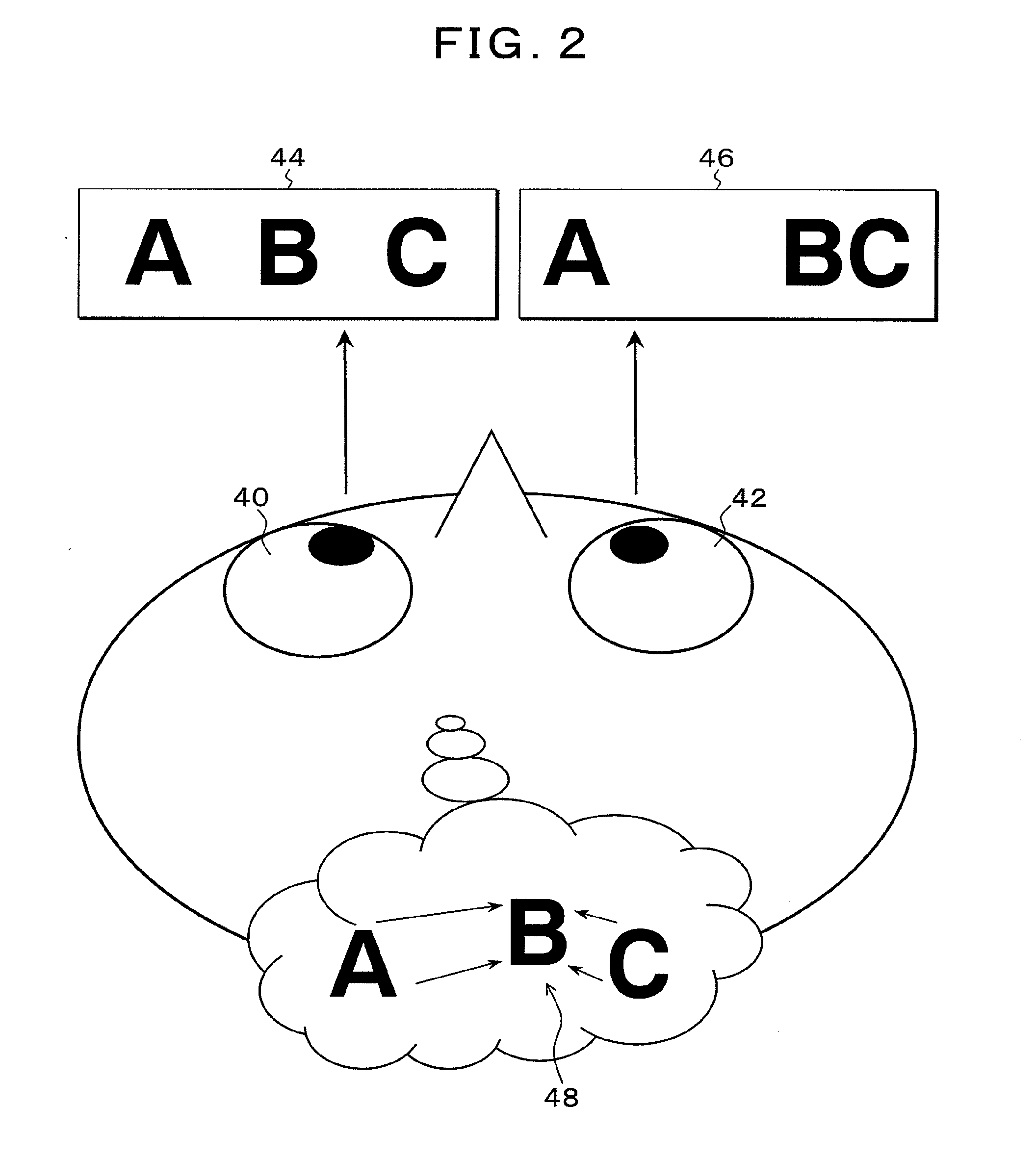Three-dimensional information presentation device using slit viewing
- Summary
- Abstract
- Description
- Claims
- Application Information
AI Technical Summary
Benefits of technology
Problems solved by technology
Method used
Image
Examples
first embodiment
[0064]FIG. 1 is a schematic drawing of the present invention. In FIG. 1, line-light-source units 10-1 to 10-5 radiate light rays 20-1 to 20-5 of images by line light sources of which directions are changed while rotating. Since a viewer a32 and a viewer b36 are at different positions, each of the line-light-source units 10-1 to 10-5 is viewed from different angles. For example, when the viewer a32 views the line-light-source unit 10-3, the light ray is perceived when the unit is in the direction of a light ray 22-3. Meanwhile, the viewer b36 perceives the light ray from the line-light-source unit 10-3 when the unit is in the direction of a light ray 24-3. Therefore, when different images are presented from the line-light-source units 10-1 to 10-5, respectively, when the angles thereof are in the directions that enable the viewer a32 and the viewer b36 to view the images, the viewer a32 perceives an image 34, and the viewer b36 perceives an image 38. In the present invention, thinned...
second embodiment
[0080]In the first embodiment, the configuration in which both of the line-light-source element and the slit are integrally rotated has been shown in detail. However, the number of the rotating slit is one, and the light source can stand still if light is emitted in the directions of 360 degrees.
[0081]FIG. 16 is a study drawing for emitting light in the directions of 360 degrees. It is conceived that the isoperimetric surface on which the slit rotates is to be divided into equal angles by an angle α. If α is 180 degrees, two point-light-source columns are required; if α is 120 degrees, three line-light-source elements are required; and, if α is 90 degrees, four line-light-source elements are required. However, although two line-light-source elements are enough for the case in which α is 180 degrees, in reality, the parts of the line-light-source elements have thicknesses, and, on the parallel surfaces of the parts sandwiching the central axis, there are ranges in which light cannot ...
third embodiment
[0084]As an example in which the second embodiment is applied, an embodiment about a method of providing slits so as to correspond to point-light-source columns of line-light-source elements in a mult-ray light-source unit will be explained.
[0085]FIG. 19 shows the structure of a line-light-source unit of the case in which three line-light-source elements of a light-source unit 202 are provided, and a light shield 204 is provided with slits 202-1 to 202-3 corresponding to respective point-light-source columns. The light-source unit 200 provided with the slits corresponding to the plurality of point-light-source columns is referred to as a multi-slit line-light-source unit. A basic method of usage of the multi-slit line-light-source unit 200 is rotation of only the slits; however, if the point-light-source columns and the slits are rotated at the same time, light rays multiplied by three are emitted; therefore, the speed of rotation becomes one third compared with the case in which th...
PUM
 Login to View More
Login to View More Abstract
Description
Claims
Application Information
 Login to View More
Login to View More - R&D
- Intellectual Property
- Life Sciences
- Materials
- Tech Scout
- Unparalleled Data Quality
- Higher Quality Content
- 60% Fewer Hallucinations
Browse by: Latest US Patents, China's latest patents, Technical Efficacy Thesaurus, Application Domain, Technology Topic, Popular Technical Reports.
© 2025 PatSnap. All rights reserved.Legal|Privacy policy|Modern Slavery Act Transparency Statement|Sitemap|About US| Contact US: help@patsnap.com



